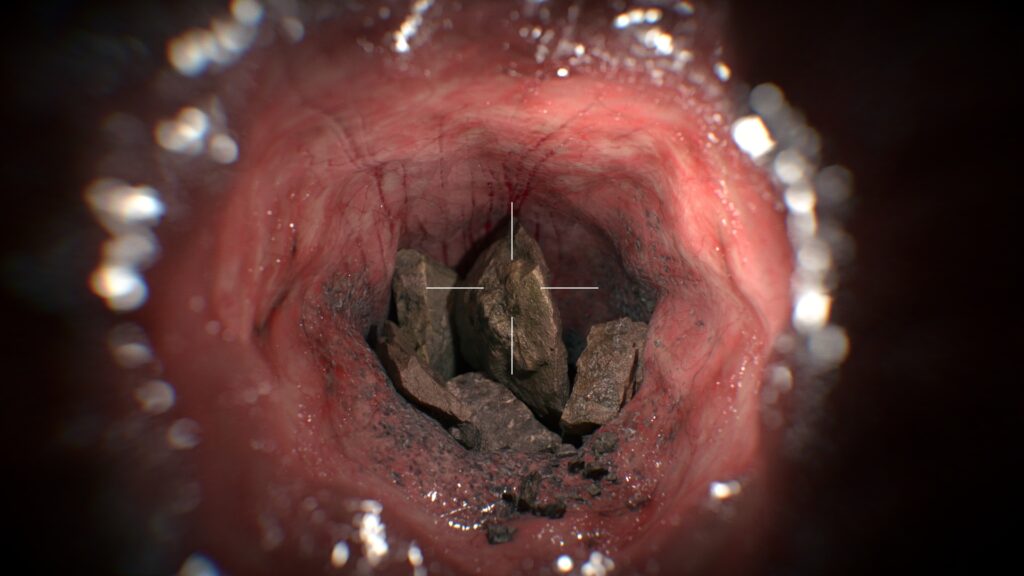Antony Crossfield’s ‘Terror Tunnels’ is a slow, suffocating descent into the human devastation of war. This experimental animation is unlike anything you’ve ever seen. Using a disturbingly realistic CG-rendered body-cam effect, Crossfield drags the viewer through the interior of a human body – one that is decaying, traumatized, and ravaged by war. It’s symbolic, metaphorical, and deeply unsettling.
A reticle sits dead centre of the frame, a chilling fusion of camera and weapon. It’s a visual cue that refuses to let you forget: this perspective is not passive. It watches, it targets. The body itself becomes a battlefield, its destruction mapped out with clinical precision. War doesn’t just destroy landscapes; it infiltrates the human form. We hear the panic outside – frantic voices, desperate to keep this body alive. But survival is slipping away. The war rages beyond, but inside, the trauma has already set in. Debris litters the body’s interior, a haunting parallel to bombed-out ruins. The line between anatomy and wreckage blurs.
Crossfield’s use of sound is as brutal as his visuals. Distant panic, explosions, the unnerving squelch of organic decay – it’s all there, suffocating and inescapable. The pain isn’t just external; it embeds itself deep within, carving tunnels through flesh and psyche alike.
The film’s immersive computer-generated animation is highly commendable. This is not realism, but it feels more real than reality itself. The body cam – an impossible, surreal perspective – feels visceral, intimate, and nightmarish. ‘Terror Tunnels’ is an unflinching, gut-wrenching piece of experimental horror. It is shocking, but it is effective. A rare, uncompromising vision that connects the destruction of war with the fragility of human life. Crossfield deserves praise for this harrowing, unforgettable film.


